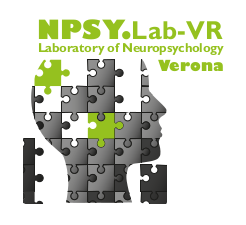The seminar will be held 8 February at the T02 Laboratory of psychology for adult age, at the Department of Human Sciences at the University of Verona. The speaker will be Cristina Bulgarelli and Martina Costamagna. Anyone and everyone are welcome to join.
Visual and cross-modal cues increase the identification of overlapping visual stimuli in Balint’s syndrome
Authors Daniela D’Imperio, Michele Scandola, Valeria Gobbetto, Cristina Bulgarelli, Matteo Salgarello, Renato Avesani & Valentina Moro Abstract Introduction: Cross-modal interactions improve the processing of external stimuli, particularly when an isolated sensory modality is impaired. When information from different modalities is…
Next Seminar: “Percezione della temporalità dell’azione nei pazienti cerebrolesi destri”
The seminar will be held 12 January at the T02 Laboratory of psychology for adult age, at the Department of Human Sciences at the University of Verona. The speaker will be Valentina Pacella, Ph.D. student at the University of Roma “La Sapienza”. The meeting will be…
Self-grounded vision: hand ownership modulates visual location through cortical beta and gamma oscillations
Authors: Nathan Faivre, Jonathan Doenz, Michele Scandola, Herberto Dhanis, Javier Bello Ruiz, Fosco Bernasconi, Roy Salomon and Olaf Blanke Abstract: Vision is known to be shaped by context, defined by environmental and bodily signals. In the Taylor illusion, the size…
Conferenza Internazionale sulle lesioni midollari
Il 29 Novembre, ala Fondazione “Santa Lucia” a Roma, si terrà la conferenza dal titolo “Rappresentazione cerebrale di Corpo, Movimento e Spazio dopo lesioni del midollo spinale. Implicazioni cliniche e riabilitative”, che rappresenterà la seconda conferenza che illustrerà lo stato…
Apparent Biological Motion in First and Third Person Perspective
Authors Emmanuele Tidoni, Michele Scandola, Veronica Orvalho, Matteo Candidi Abstract Apparent biological motion is the perception of plausible movements when two alternating images depicting the initial and final phase of an action are presented at specific stimulus onset asynchronies. Here,…
